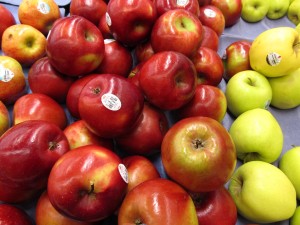No more climbing ladders to pick apples. Less waiting for first harvest for newly planted tree. These are some of the reasons for planting dwarf apple trees. Over the past 100 years numerous dwarf rootstocks have been introduced.
In addition to the degree of dwarfing, some rootstocks are more disease and insect resistant. The original East Malling Research Station in England (“EM rootstocks”) reduced tree size and led to earlier first harvests. However, EM rootstocks are not resistant to wooly apple aphid in the southeastern U.S.
A second series from England, designated Malling Merton (MM), are wooly aphid resistant. Recent rootstock introductions are the Geneva series (G), which are resistant to fire blight (Erwinia amylovora) and collar rot (Phytophthora spp.) diseases.
Popular Rootstocks Size control
EMIX*, Bud 9* 70% reduction in size
M26*, G16A, G11A* 60% reduction in size
EMVII*, G30A* 50% reduction in size
MM106 25% reduction in size
MM111 20% reduction in size
Disease and insect resistances of the various rootstocks vary. Check with your local Extension office to determine which pests are prevalent in your area. Apple trees on dwarf rootstocks should not be permitted to crop until the third year after planting. Those rootstocks indicated with * tend to be shallow rooted and require staking for tree support.


 Posted in
Posted in 
